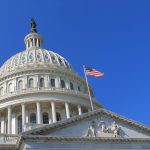Published April 30, 2012
Newly reported official estimates from the actuaries at the Centers for Medicare and Medicaid Services (CMS) show nationwide health spending rose just 3.8 percent in 2009 and 3.9 percent in 2010—the slowest rates of growth in five decades. The average rate of annual spending growth from 1997 to 2008 was 6.9 percent.
Naturally, speculation has started—as in this story from this past Saturday’s New York Times—over what might have caused this slowdown and whether it will continue.
There’s general agreement that the primary explanation is the deep recession. Whenever the economy slows and unemployment rises, incomes are constrained, so utilization of health services moderates, much as demand for other goods and services drops. The 2008-2009 recession was especially acute, so it’s not a surprise that the slowdown in health-spending inflation was pronounced as well.
Further, the recent recession was associated with a dramatic decline in personal wealth, as housing and other assets dropped precipitously in value. The so-called “wealth effect”—far greater in this recession compared with earlier downturns—may have played an outsized role in the suppressed demand for health services in 2009 and 2010 too.
Still, it would appear that these economic factors alone don’t fully explain the drop in spending growth, so the search is on for additional causes.
Here’s one thing we can rule out: Obamacare.
Some of the law’s advocates are trying to take credit for the slowdown in spending, claiming that the debate over Obamacare and the prospect of its “cost control” efforts becoming law were enough to force anticipatory actions that have rooted out waste and inefficiency.
This is nonsense.
The most consequential early provisions of Obamacare all point to cost increases, not decreases. Employers have said that the required coverage of “children” up to age 26, and other requirements on insurance policies imposed by the law have already added a couple of percentage points to premiums.
Moreover, even in 2012, the Medicare provisions in Obamacare aimed at encouraging cost control are barely in motion and are off to a very slow start. The idea that these could have had an effect on spending in 2009 and 2010 is not credible, to put it gently.
If anything, the slowdown in health spending that occurred in 2009 and 2010 would actually seem to be the continuation of a trend that is traceable back to 2002. In that year, health spending rose an incredible 9.5 percent. But in 2003, the rise was 8.4 percent, and in each subsequent year thereafter, through 2010, it continued to fall, including to just 4.7 percent in 2008.
It’s not a coincidence that this drop in spending occurred at the same time many U.S. employers were encouraging enrollment in high-deductible insurance plans, that have larger up-front deductibles than the traditional employer-sponsored coverage. It helped that the 2003 Medicare drug benefit also gave a big push to high-deductible health plans by making it much more attractive for Americans to set up and use Health Savings Accounts in conjunction with high-deductible insurance. The Times story reports that enrollment in such plans jumped from 3 percent of workers in 2006 to 13 percent in 2011, and that enrollment in such plans is associated with about a 14 percent reduction in use of services compared to similar enrollees in low-deductible plans. (For more on this trend, see this piece by AEI’s J. D. Kleinke.)
Even so, what should not be forgotten is that Obamacare did not alter the main reason health spending has tended to grow rapidly over the past four decades: flawed government policies. Indeed, Obamacare doubles down on federally subsidized third-party insurance arrangements, the engines for health care’s hyperinflation. In Medicare, Medicaid, and employer-sponsored plans, the government provides greater subsidies for high-cost care, which largely undermines the incentives for economizing. Whatever happened in 2009 and 2010, it does not represent a reversal of the basic incentives in American health care, and therefore it would be foolish to assume the cost dragon has been slain.
Moreover, in the unlikely event that we could stop worrying about unaffordable premium increases, federal health spending would still be unaffordable because of the massive rise in enrollment scheduled for Medicare, Medicaid, and Obamacare’s new premium-subsidy entitlement program. There’s no getting around the fact that the federal budget is overloaded with entitlement promises that must be scaled back even if health spending rises only commensurate with the economy.
James C. Capretta is a fellow at the Ethics and Public Policy Center and a visiting fellow at the American Enterprise Institute.










